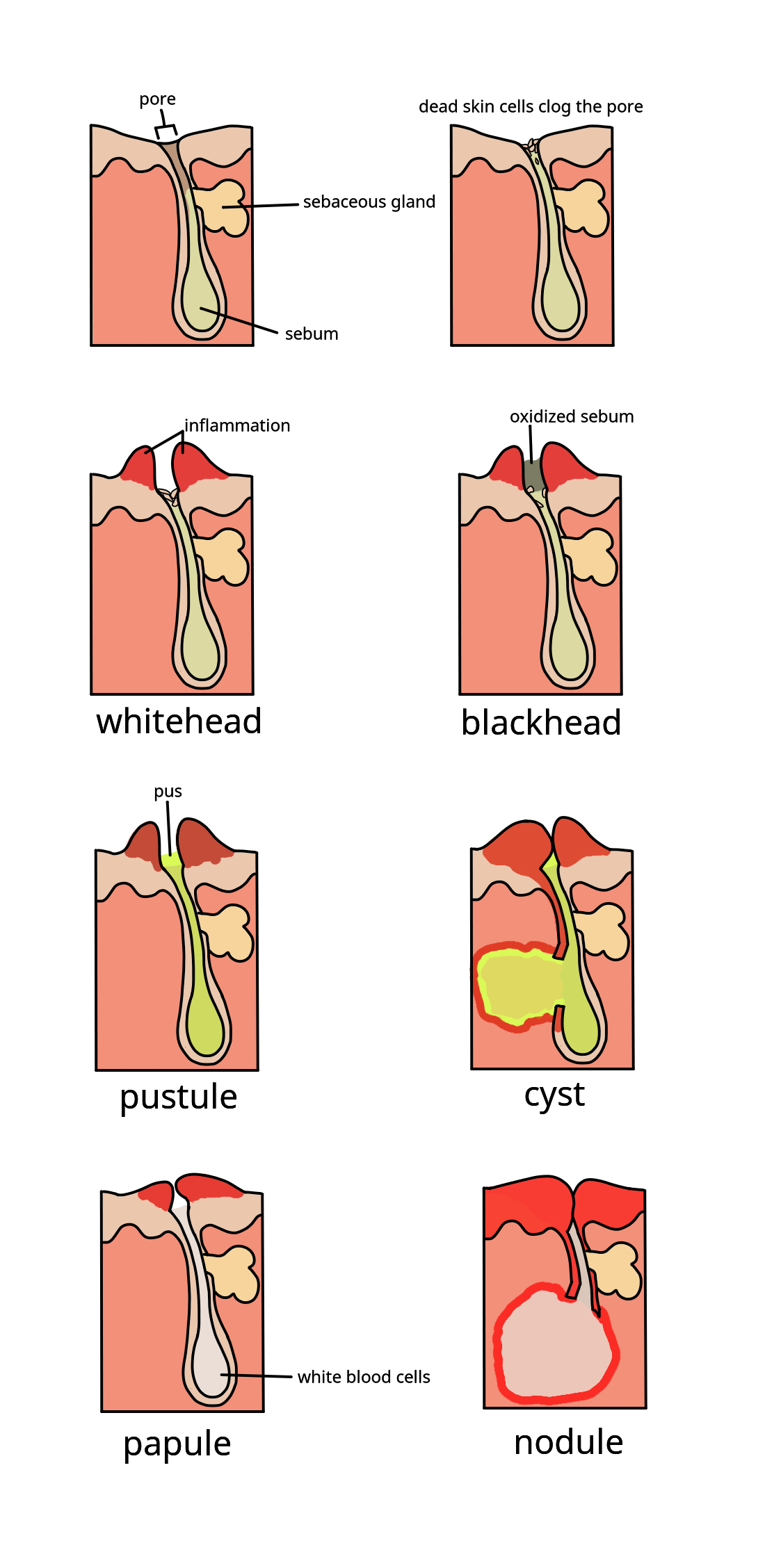|
Tropical Acne
Tropical acne is unusually severe acne occurring in the tropics during seasons when the weather is hot and humid.James, William; Berger, Timothy; Elston, Dirk (2005). ''Andrews' Diseases of the Skin: Clinical Dermatology''. (10th ed.). Saunders. . Skin conditions including acne are seen with more frequency in dermatological consultations in hot and humid climates, where bacterial and fungal infections are more common, than in drier climates.Gelman, Ari; Norton, Scott; Valdez-Rodriguez, Rodrigo; Yosipovitch, Gil. (2015). A Review of Skin Conditions in Modern Warfare and Peacekeeping Operations. ''Military Medicine, 180'' (1), 32. https://academic.oup.com/milmed/article/180/1/32/4159965 See also * List of cutaneous conditions * List of skin conditions * Oil acne * Skin condition A skin condition, also known as cutaneous condition, is any medical condition that affects the integumentary system—the organ system that encloses the body and includes skin, nails, and related mu ... [...More Info...] [...Related Items...] OR: [Wikipedia] [Google] [Baidu] |
Acne
Acne ( ), also known as ''acne vulgaris'', is a long-term Cutaneous condition, skin condition that occurs when Keratinocyte, dead skin cells and Sebum, oil from the skin clog hair follicles. Typical features of the condition include comedo, blackheads or whiteheads, pimples, oily skin, and possible scarring. It primarily affects skin with a relatively high number of sebaceous gland, oil glands, including the face, upper part of the chest, and back. The resulting appearance can lead to lack of confidence, anxiety (mood), anxiety, reduced self-esteem, and, in extreme cases, clinical depression, depression or suicidal ideations, thoughts of suicide. Susceptibility to acne is primarily genetic in 80% of cases. The roles of diet and cigarette smoking in the condition are unclear, and neither hygiene, cleanliness nor exposure to sunlight are associated with acne. In both sexes, hormones called androgens appear to be part of the underlying mechanism, by causing increased production ... [...More Info...] [...Related Items...] OR: [Wikipedia] [Google] [Baidu] |
List Of Cutaneous Conditions
Many skin conditions affect the human integumentary system—the organ system covering the entire surface of the Human body, body and composed of Human skin, skin, hair, Nail (anatomy), nails, and related muscle and glands. The major function of this system is as a barrier against the external environment. The skin weighs an average of four kilograms, covers an area of two square metres, and is made of three distinct layers: the epidermis (skin), epidermis, dermis, and subcutaneous tissue. The two main types of human skin are: glabrous skin, the hairless skin on the palms and soles (also referred to as the "palmoplantar" surfaces), and hair-bearing skin.Burns, Tony; ''et al''. (2006) ''Rook's Textbook of Dermatology CD-ROM''. Wiley-Blackwell. . Within the latter type, the hairs occur in structures called pilosebaceous units, each with hair follicle, sebaceous gland, and associated arrector pili muscle. Embryology, In the embryo, the epidermis, hair, and glands form from the ectod ... [...More Info...] [...Related Items...] OR: [Wikipedia] [Google] [Baidu] |
Oil Acne
Oil acne is an occupational skin condition caused by exposure to oils used in industry. See also * Acne cosmetica * List of cutaneous conditions Many skin conditions affect the human integumentary system—the organ system covering the entire surface of the Human body, body and composed of Human skin, skin, hair, Nail (anatomy), nails, and related muscle and glands. The major function o ... * Soot tattoo References External links Acneiform eruptions {{Cutaneous-condition-stub} ... [...More Info...] [...Related Items...] OR: [Wikipedia] [Google] [Baidu] |
Skin Condition
A skin condition, also known as cutaneous condition, is any medical condition that affects the integumentary system—the organ system that encloses the body and includes skin, nails, and related muscle and glands. The major function of this system is as a barrier against the external environment. Conditions of the human integumentary system constitute a broad spectrum of diseases, also known as dermatoses, as well as many nonpathologic states (like, in certain circumstances, melanonychia and racquet nails). While only a small number of skin diseases account for most visits to the physician, thousands of skin conditions have been described. Classification of these conditions often presents many nosological challenges, since underlying causes and pathogenetics are often not known. Therefore, most current textbooks present a classification based on location (for example, conditions of the mucous membrane), morphology ( chronic blistering conditions), cause ( skin conditions ... [...More Info...] [...Related Items...] OR: [Wikipedia] [Google] [Baidu] |
ILDS
The International League of Dermatological Societies (ILDS) is a non-governmental organization that works closely with the World Health Organization. It was founded in 1935, but because of World War II no congresses were held until 1952. It is governed by the International Committee of Dermatology. The ILDS is the parent organization of the International Foundation for Dermatology, founded in 1987. After the publication of ICD-10, the ILDS produced a series of compatible extensions for use in dermatology Dermatology is the branch of medicine dealing with the Human skin, skin.''Random House Webster's Unabridged Dictionary.'' Random House, Inc. 2001. Page 537. . It is a speciality with both medical and surgical aspects. A List of dermatologists, .... References External links Official site HistoryInternational Foundation for DermatologyApplication to Dermatology of International Classification of Disease (ICD-11) Organizations established in 1935 Dermatology organi ... [...More Info...] [...Related Items...] OR: [Wikipedia] [Google] [Baidu] |

